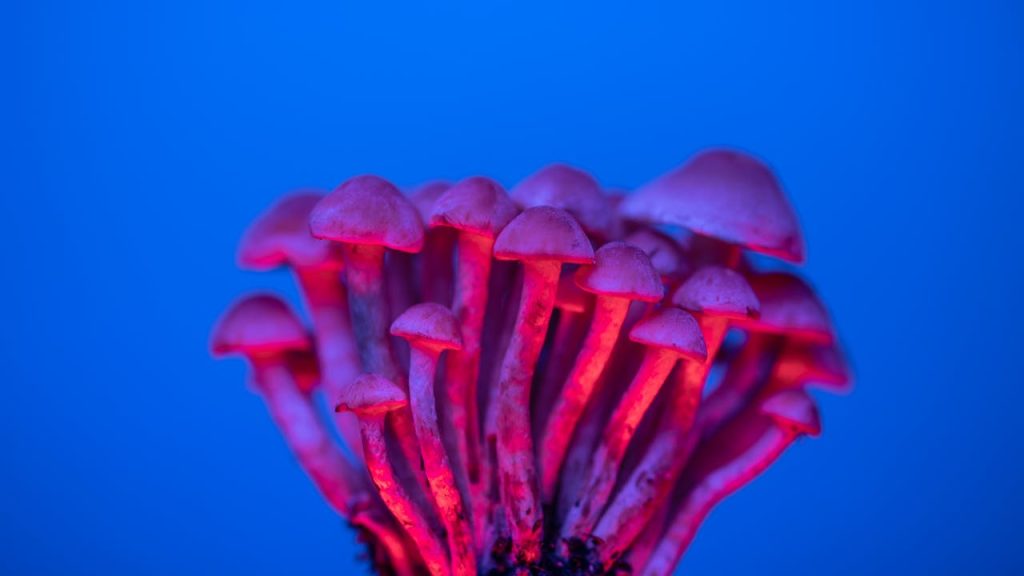Psilocybin is a natural psychedelic compound found in certain mushrooms, commonly called “magic mushrooms.” Indigenous cultures have used them for centuries in spiritual rituals, and modern science is now uncovering their potential for treating mental health conditions. This article explores how psilocybin works, its historical significance, and the latest research on its therapeutic benefits.
Neuroscience Behind Psilocybin
How Psilocybin Affects the Brain
When ingested, psilocybin is converted into psilocin, which interacts with serotonin receptors—especially the 5-HT2A receptor—causing changes in mood, perception, and cognition. This interaction is responsible for the psychedelic experience and potential therapeutic effects.
Neuroplasticity and Brain Connectivity
Psilocybin alters brain network dynamics by reducing activity in the default mode network (DMN)—a system involved in self-reflection and repetitive thought patterns. At the same time, it enhances connectivity between different brain regions, allowing for more flexible thinking and emotional processing.
Recent research shows that psilocybin can promote neuroplasticity—the brain’s ability to form new connections. A 2021 study found that within 24 hours of psilocybin exposure, neurons formed 10% more dendritic spines (structures that facilitate communication between brain cells), and these changes lasted for a month. This could explain why psilocybin has long-term antidepressant effects.
Subjective Effects and Experience
During a psilocybin experience, users often report enhanced colors, distorted visuals, time dilation, and deep emotional shifts. Many also describe ego dissolution, a state where the boundary between self and environment feels blurred. This temporary rewiring of the brain may help people break out of negative thought loops, making psilocybin useful for treating depression and anxiety.
Historical Use of Psilocybin
Ancient Mesoamerican Rituals
Archaeological evidence suggests that psilocybin-containing mushrooms have been used in Central and South America for over 3,000 years. The Aztecs called them “teonanácatl”, meaning “flesh of the gods.” They were used in religious ceremonies for vision quests, healing, and communication with the divine. Spanish colonizers attempted to eradicate this practice in the 1500s, but indigenous traditions persisted in secret.
María Sabina and Western Discovery
In the 1950s, Mazatec healer María Sabina introduced psilocybin ceremonies to American ethnobotanist R. Gordon Wasson, who wrote about the experience in Life magazine. This led to the rediscovery of psilocybin in the West, and Swiss chemist Albert Hofmann later isolated the compound in 1958. However, the publicity led to an influx of outsiders to Mazatec villages, disrupting local traditions.
Recent Therapeutic Studies
How Psilocybin Works for Depression
Modern research shows psilocybin can rapidly reduce symptoms of depression. A 2023 clinical trial found that a single dose of psilocybin led to significant improvements in depression scores compared to a placebo, with effects lasting six weeks or more. Unlike traditional antidepressants, psilocybin appears to work through a single, transformative experience, rather than requiring daily use.
Other Mental Health Benefits
Preliminary studies suggest psilocybin could help treat PTSD, addiction, and anxiety-related disorders. Its ability to reduce fear and promote emotional openness makes it a promising tool for psychotherapy. Additionally, research on end-of-life anxiety in terminally ill patients has found that psilocybin improves quality of life and reduces distress.
Sources
- JAMA (2023): “Single-Dose Psilocybin Treatment for Major Depressive Disorder”
- Neurologia (2015): “Hallucinogenic drugs in pre-Columbian Mesoamerican cultures”
- Neuron (2021): “Psilocybin induces rapid and persistent growth of dendritic spines in frontal cortex in vivo”
J. Antibiot – Tokyo (2020): “Psilocybin: from ancient magic to modern medicine”
